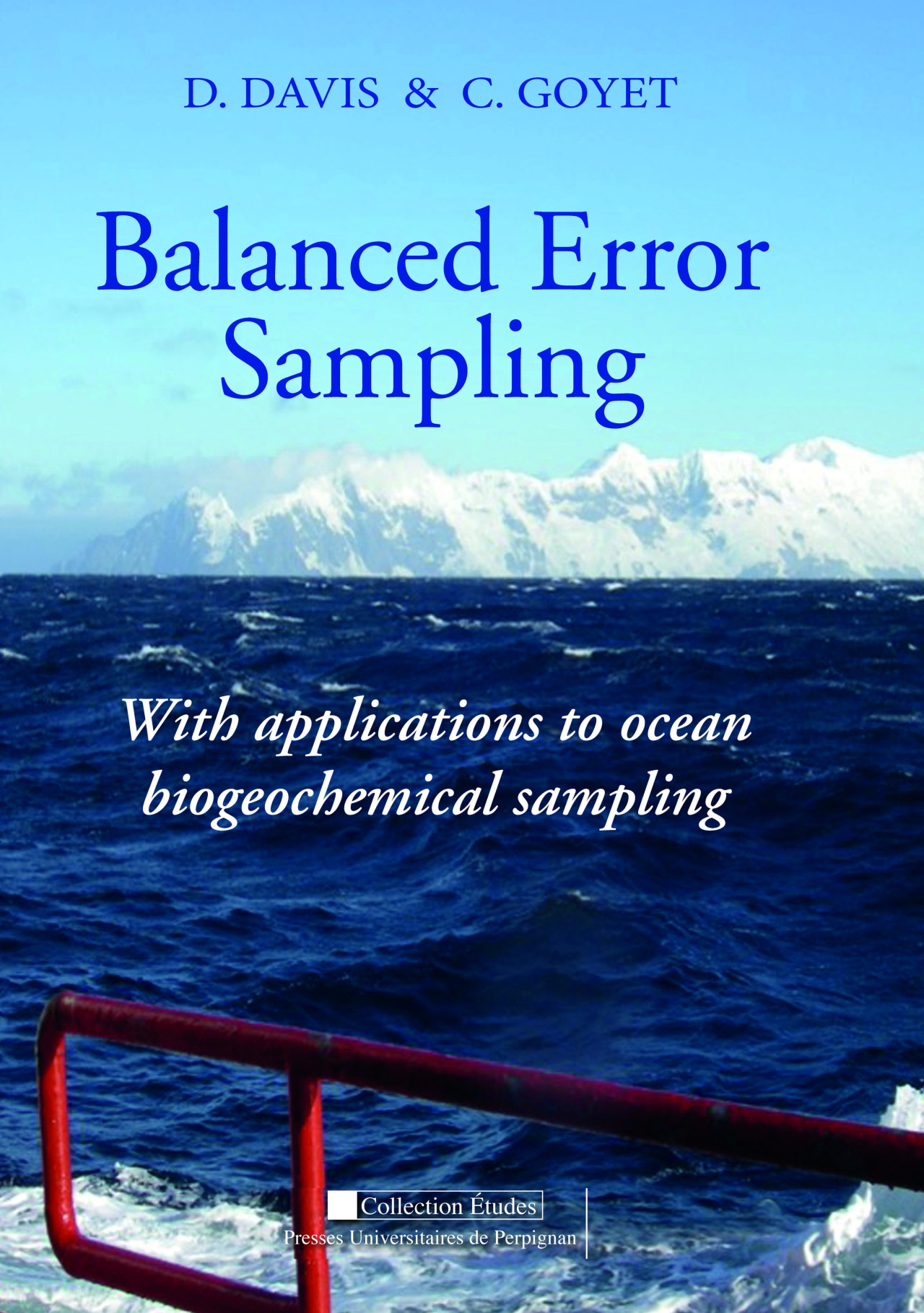CHAPTER 1. Introduction 1
0.0 Understanding the environment. 1
1.0 The challenge to collect data over the ocean. 1
1.1 Sampling data in the ocean – current practices. 2
1.2 The oceanic carbon cycle and geochemical variability in the
ocean. 3
2.0 The sampling and interpolation problem. 4
2.1 Lagrange interpolation and Shannon sampling. 6
3.0 The approach of this book. 9
3.1 The organization of this book. 9
CHAPTER 2. Balanced error sampling and linear interpolation 13
1.0 Overview. 13
2.0 Mathematical basics - sample error, spacing and variability. 13
2.1 A sample error formula based on sample spacing and sample
variability. 15
2.2 Sample variability properties. 18
2.3 Relation between sample variability and the second order
derivative of the underlying data field. 20
2.4 Bounds on sample error using the sample variability of the
data field. 22
2.5 Balanced error bound sample patterns. 24
2.6 A relationship between the maximum error and sample size
for a balanced error bound sample pattern. 26
2.7 A general algorithm for calculating a 'balanced error bound'
sample pattern. 28
3.0 Summary and Conclusions. 33
CHAPTER 2 - APPENDIX 34
CHAPTER 3. Applying balanced error bound sampling analysis to oceanographic data 39
1.0 Overview. 39
1.1 Summary of basic concepts: sample error, sample variability,
and sample spacing. 39
1.2 Summary of key results. 41
2.0 Estimating a sample variability bound from in situ data. 43
2.1 An efficient algorithm for finding a semi-balanced error
bound sample pattern. 48
2.2 Analyzing temperature and salinity. 57
2.3 A single semi-balanced error sample pattern for temperature,
salinity, and oxygen. 62
2.4 A balanced error sample pattern for bottle TCO2 data from a
linear relationship to temperature, salinity, and oxygen. 64
3.0 Summary and Discussion. 70
CHAPTER 3 - APPENDIX 72
CHAPTER 4. Nth order balanced error sampling analysis 75
1.0 Overview. 75
2.0 Mathematical basics – Nth order Lagrange interpolation,
sample error, sample spacing and sample variability. 75
2.1 An Nth order sample error formula based on sample spacing
and sample variability. 82
2.2 Sample variability properties. 90
2.3 Nth order sample variability and the Nth order derivative of
the underlying data field. 92
2.4 Bounds on Nth order sample error using the (N+1)th order
sample variability of the data field. 95
2.5 Nth order balanced error bound sample patterns. 98
2.6 An estimate of subinterval maximum error for sample
patterns given a positive bound on variability. 100
2.7 An efficient algorithm for finding a semi-balanced error
bound sample pattern. 103
2.8 A relation between minimum maximum error and sample
size for semi-balanced error bound sample patterns given a
positive bound on variability. 108
2.9 Semi-balanced error bound sample patterns for constant
bounds are balanced and evenly spaced. 113
2.10 Summary. 127
CHAPTER 4 - APPENDIX 128
CHAPTER 5. Applying Nth order balanced error sampling analysis to common function classes and oceanographic data 131
1.0 Overview. 131
1.1 Basic Nth order concepts: Lagrange interpolation, sample
variability, sample error and sample spacing. 132
1.2 Summary of key results from Chapter 4. 138
2.0 Harmonic Functions. 141
2.1 Fourier Sums. 146
2.2 Logarithmic Functions. 152
2.3 Exponential Functions. 159
3.0 Analyzing and sampling ocean data using higher order. 165
3.1 Analyzing linearly related ocean data. 176
4.0 Lagrange interpolation and the Shannon Theorem. 182
4.1 Lagrange weighting polynomials and sinc functions. 183
4.2 Shannon's formula and Nth order Lagrange approximation. 192
4.3 Alternate forms of the Shannon formula. 194
4.4 Summary of Sections 4.0. 201
5.0 Summary and Conclusions. 201
References 204
Index 206

